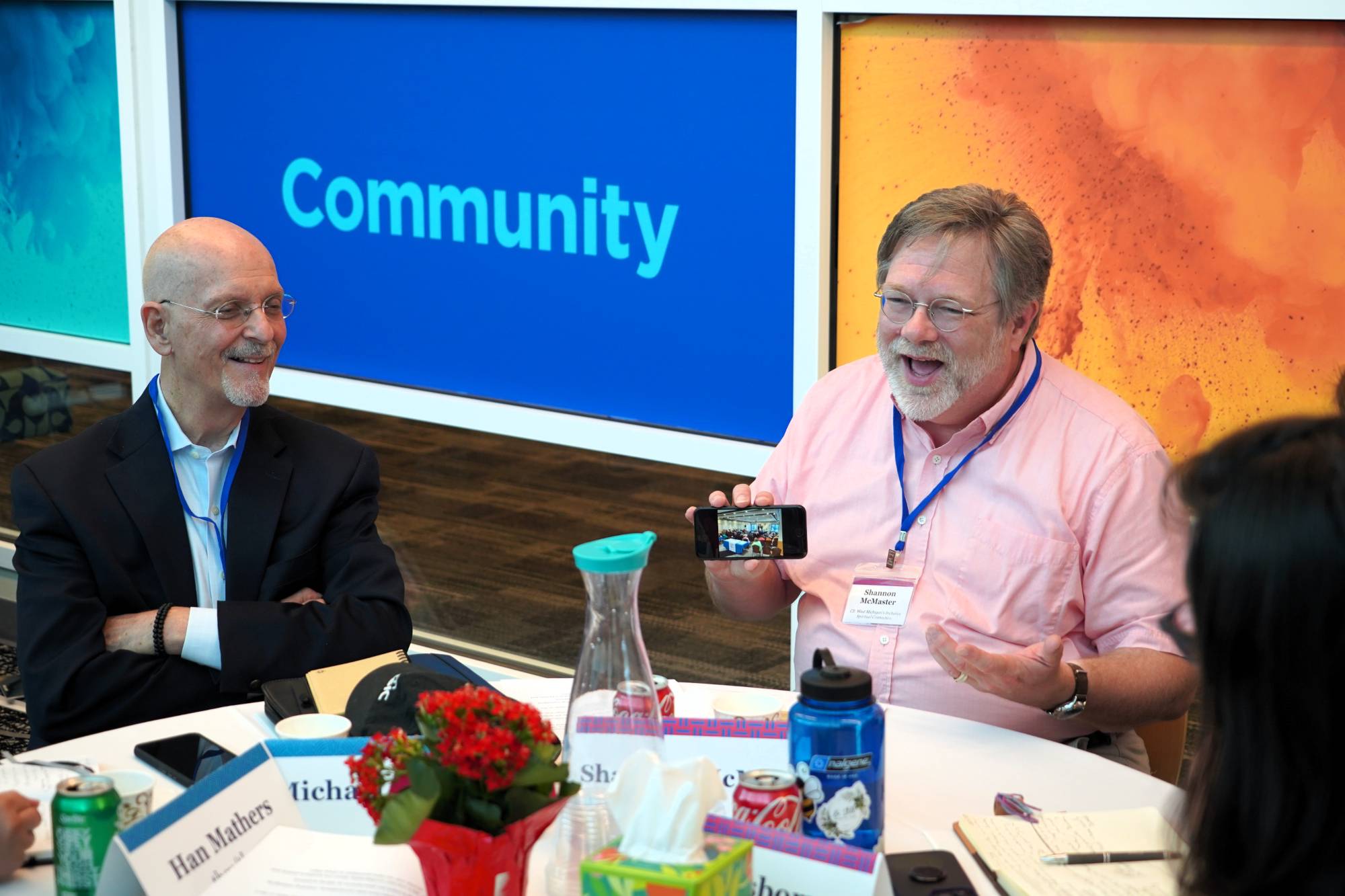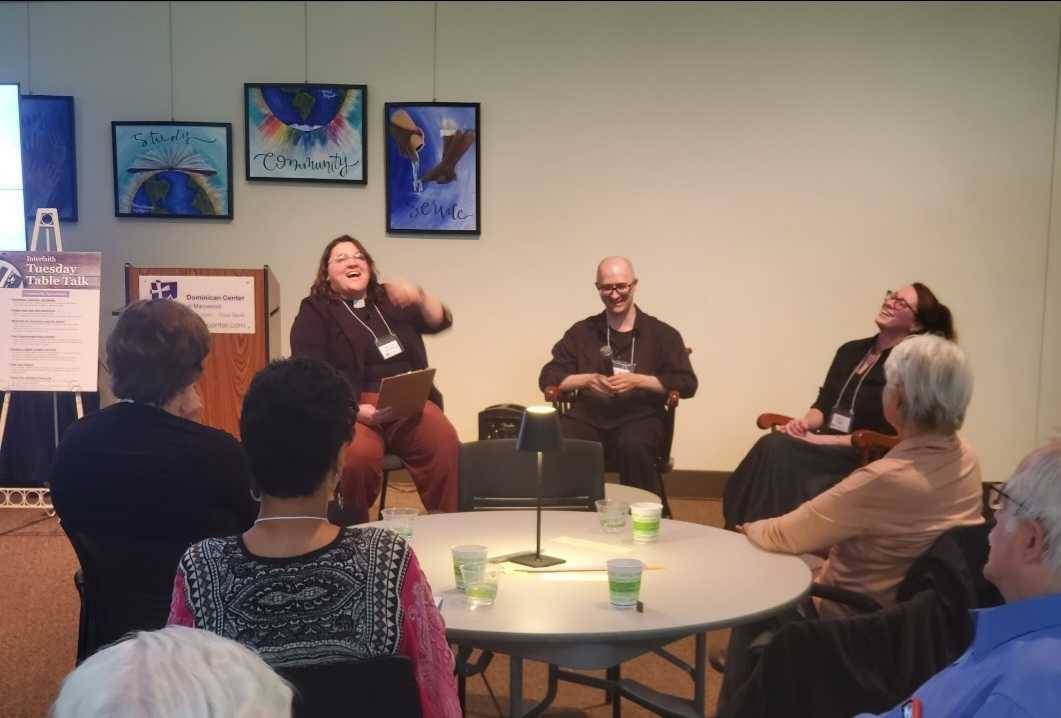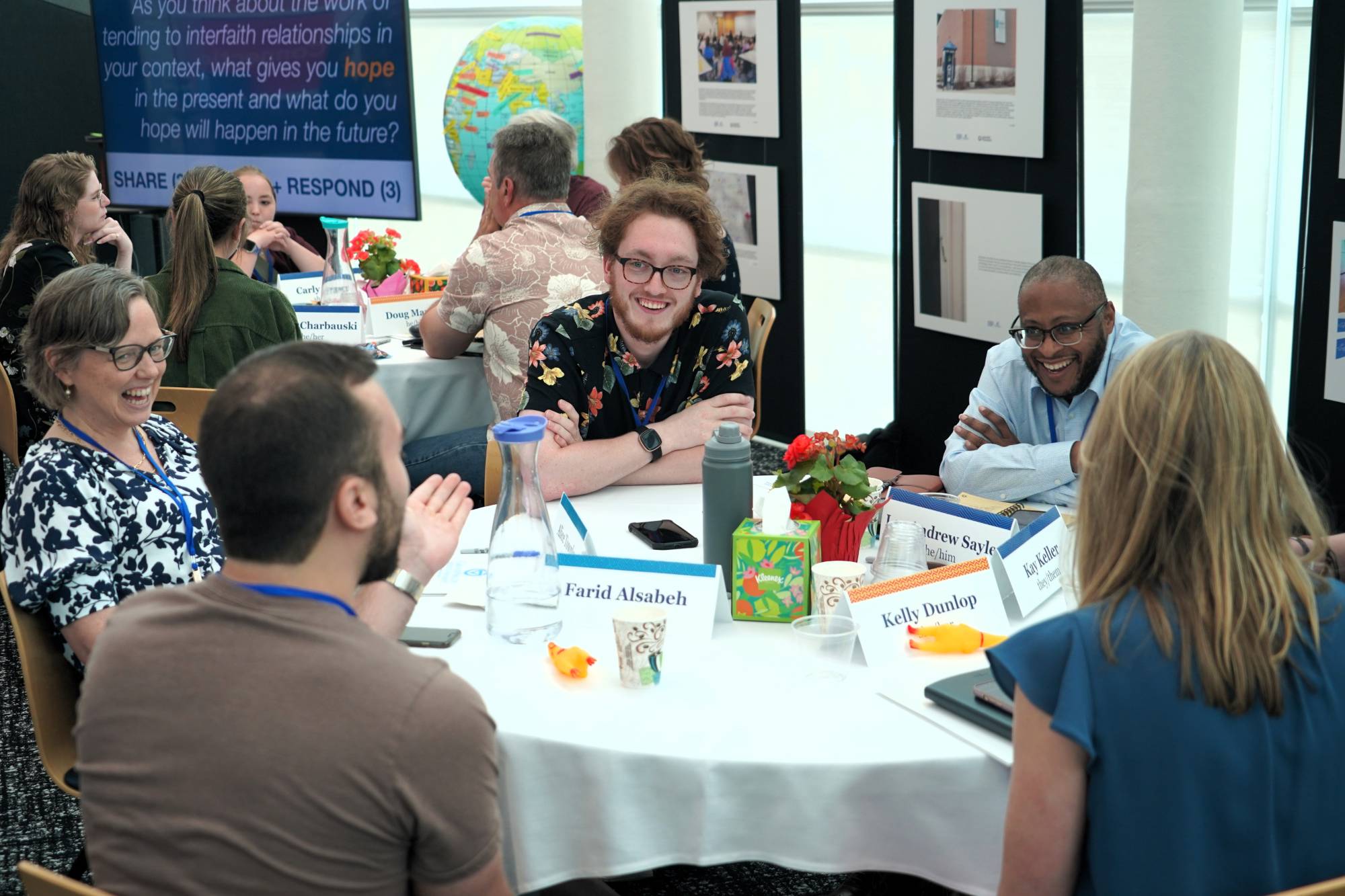Kaufman Updates
Permanent link for Engaging 'Thin Spaces' of Connection, Understanding, and Transformation | By Kyle Kooyers, Director of Operations on September 17, 2024
“No one lives outside the walls of this sacred place, existence.” -Rabia Al Basri, Arab Muslim Saint and Sufi Mystic
Growing up in the Christian Tradition, especially around the summer camp scene, we would often use the term “thin place” to describe spaces and contexts where there was a nearness to the sacred, a closeness to God. Originating with Celtic Pagan culture, the implication of this term is that the line, the veil, the distance between the physical and the ethereal or heaven and earth, was so very fine that one could almost exist in both places simultaneously, becoming attune to the presence and movement of the divine energy.
These “thin places” look different for each of us - especially as we orient differently around religious, secular or spiritual identities. Perhaps it’s engaging in a thoughtful and honest conversation, free from distraction, where we see or feel seen by those who we can no longer call a stranger. Perhaps it’s retuning to the rhythms and frequency of nature as we sit awestruck of our earth, floating as dust through the vastness of the Milky Way. Perhaps it’s feeling awash and alive with the emotional language of dance and song, moved by rhythms of our artists and ancestors. Or perhaps it’s the moment of breaking bread, where we share sustenance at a table with those whose daily dependence on food illumines the sacred reality of our shared mortality.
It’s not that these spaces or moments are in any way magical in and of themselves, though they may certainly feel as such. Rather, they interrupt us. They draw our attention to something that has been there all along. We are opened-up to the numinous, to the profound sense of presence and connection to something beyond us…even if that “sacredness” is simply our shared planet and inhabitance as a human species.
In her book, Sage Warrior, author and activist Valarie Kaur writes, “If we are all apart of the one, then there is no space that is not sacred. But it’s so hard to remember that when we are holding a toddler over a toilet. Or stuck in traffic. Or falling into our phones. It’s especially hard to remember in the wake of a mass shooting or climate disaster or atrocities happening in real time. We need to demarcate space in order to connect with the sacred…These are not spaces of escape; they are spaces of refuge where we can respond to what is happening from our deepest wisdom, our best selves.”
Kaur goes on to talk about the importance of finding that sacred sovereign space within us for energy and resilience. But here at the Kaufman Institute, we recognize that we also have that in each other. We must also do this work of demarcation, even in interfaith dialogue, so that we can connect to one another. That isn’t always easy. In an era of hybrid attendance and recordings made available after the fact, our presence is no longer required to participate and take in the content of a gathering. But what about the visceral feeling of the space, the human connection, the collective transformation? To paraphrase Gil Scott-Heron, the revolution will not be live-streamed.
Over the course of this past month, the Kaufman Institute has been working to nurture those demarcated spaces. At the end of August, we hosted our first in-person luncheon for Multi-faith Leaders since the start of the pandemic. These gatherings have been a rich time of connection and relationship building where we can share with each other the concerns, hopes, and emerging projects of our respective communities. Looking ahead, the Institute plans to revamp these spaces to better network and support area clergy and leaders as they are helping their communities navigating a very polarized and uncertain time.
Staying with the theme of ambiguity and anxiety, last week we held our Fall Interfaith Tuesday Table Talk, planned hosted in partnership with Dominican Center Marywood at Aquinas College. The theme, drawing from the wisdom of Howard Thurman, was “Centering Down in an Uncertain World.” It was profoundly appropriate that, on the night of the US Presidential debate, we gathered to talk about the ways we can look to our centers of belief, behavior, and belonging to sustain ourselves in seasons and times that are profoundly disorienting and unpredictable. We shared with one another the anxieties we are holding as well as the ways in which we can choose to respond with thoughtfulness, centered in compassion, rather than giving in to the seeming normalcy of vitriol.
At both of these gatherings, the rooms were warm and transcendent as we had space to pause and simply listen to one another. They were disruptive in the most beautiful and edifying sense. Franciscan friar and teacher, Richard Rohr, offers this observation:
“[We] often remain trapped in what we call normalcy— 'the way things are.' Life then revolves around problem-solving, fixing, explaining, and taking sides with winners and losers. It can be a pretty circular and even nonsensical existence. To get out of this repetitive cycle, we have to allow ourselves to be drawn into sacred space, into liminality. All transformation takes place here...This is the sacred space where the old world is able to fall apart, and a bigger world is revealed.”
There is a very palpable opening-up that we have found within these in-person spaces, where we invest in the intimate. Free from the tyranny of the camera or recording, free from the trappings of an impressive headcount that renders us invisible to the crowd, we can share a profoundly authentic human experience with one another. Yes, we will still offer our larger events, and we will strive to make those events accessible to folks who, for one reason or another, are unable to join us in-person. But there is something to be said for being together, for engaging in thick dialogue in thin spaces – for drawing each other’s attention to the abiding presence of something that is much larger than any of us and yet, at the same time, requires all of us. This is where connection, understanding, and transformation take place.





[1726585842].jpg)